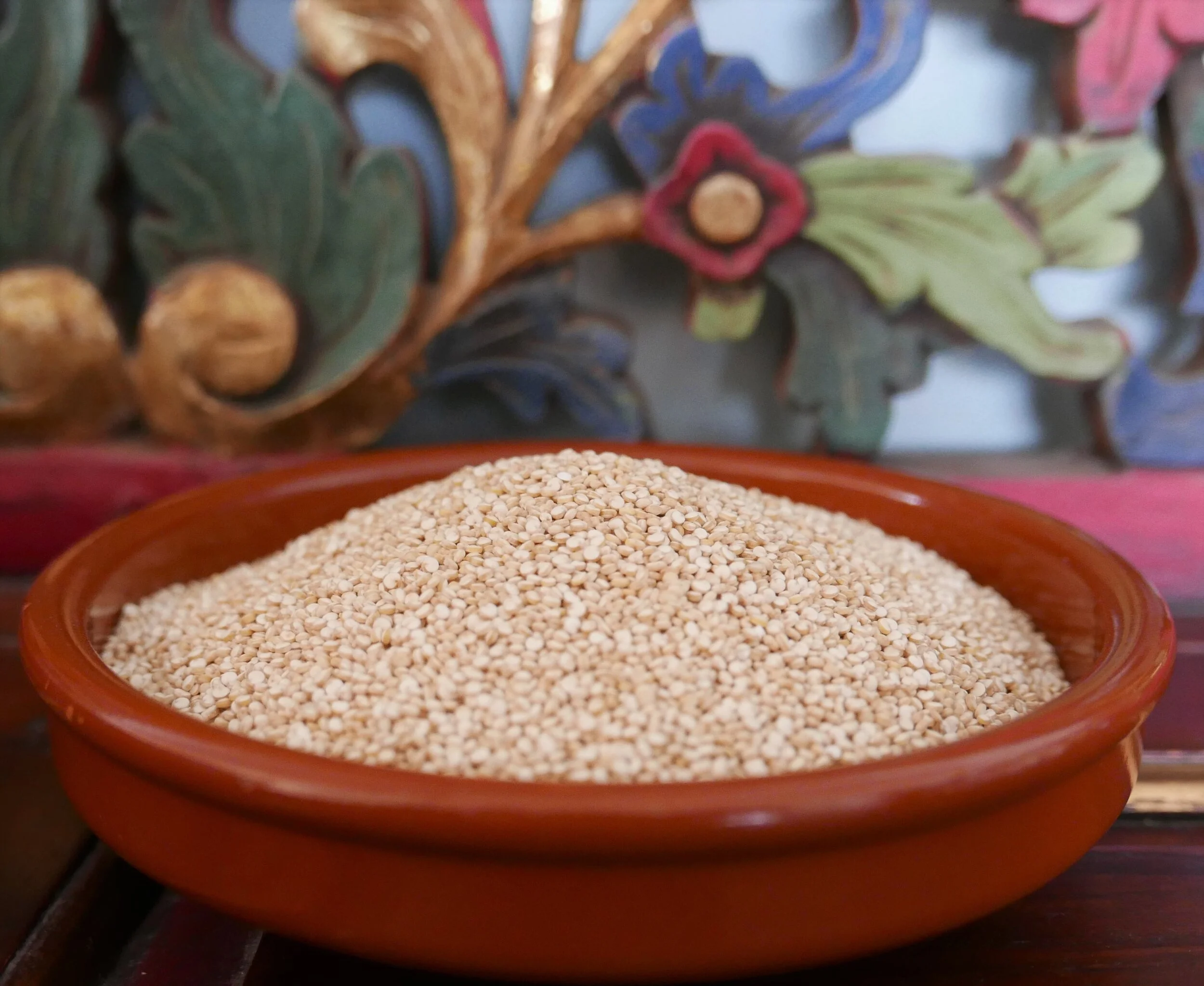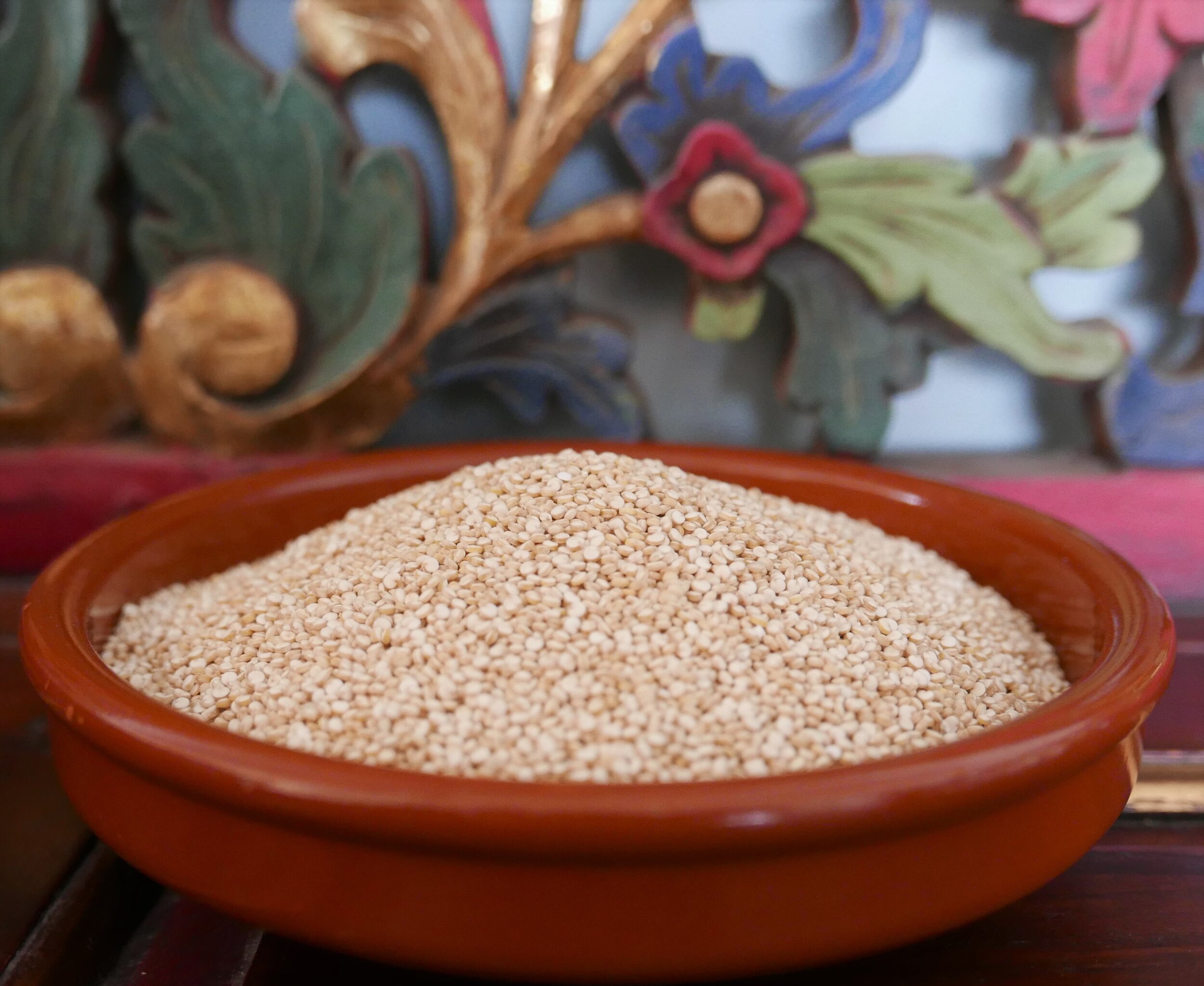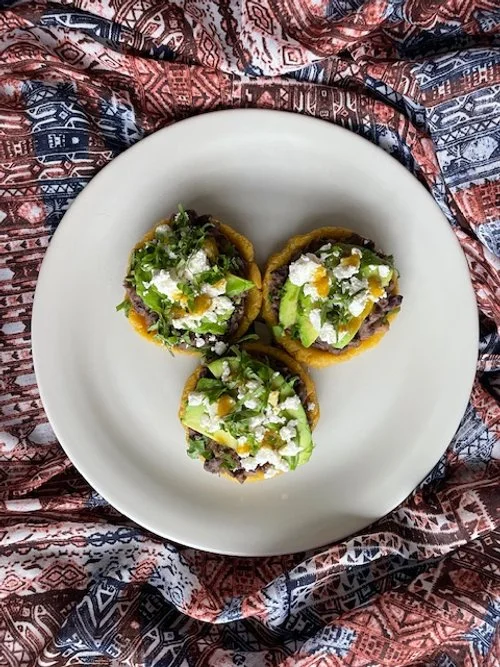explore the world through the universal language of food
Quinoa - The Superfood of the Ancient and Modern world
A cluster of purple flowering, over metre-high quinoa, is truly a magnificent sight to see. The goosefoot plant is closely related to beetroot, spinach and amaranth with edible leaves but most importantly, a nutrient-enriched seed.
What is Quinoa?
Quinoa is now known today as one of the most popular ‘superfoods’ and is available around the world. This pseudo-cereal is extremely versatile eaten as a grain, ground into flour and also made into dairy-free milk. It is a gluten-free plant-based protein that contains amino acids, fibre, vitamins and magnesium.
This ancient crop has existed for over 7,000 years, finding its roots in the Andes region surrounding Lake Titicaca in Bolivia and Peru. Kinwa (in Quechuan language, used by indigenous Andean people) held strong cultural and religious significance within the Incan empire. It was a gift to the Gods and was known as “Chisaya Mama”, the mother of all grains.
When the Spanish conquistadors arrived in the Americas in the 14th Century, they burnt fields of quinoa, banishing the use of the seed for religious ceremonies.
Quinoa Fields
Credit: Cristobal Demarta via Getty Images
Fortunately, quinoa is an extremely stable and adaptable crop, surviving in harsh environmental conditions with little water needed. There are many types of quinoa that have adapted over the years to the varying geographical areas along the Andes, however, the most exported quinoa from South America is the large white seed which we see on our supermarket shelves.
Both Peru and Bolivia contribute to 80% of Quinoa’s global trade, with Peru being the largest producer of the two. Quinoa is grown in dry climates and the surge of its popularity and price after 2006 saw certain varietals starting to be cultivated around the world such as the United States, Europe, Africa and Asia.
The United Nations declared International Year of Quinoa in 2013 to raise awareness of this important ancient crop and to bring attention and support to the farmers in Bolivia and Peru. Quinoa from Bolivia is associated with the name Quinoa Real, produced by 60% of the farmers and certified organic. Peruvian quinoa is broken down into the categories of organic, biodiverse, and supporting women’s livelihoods.
The Andean grains program in South America focuses on aiding poor communities that farm quinoa, in particular women who are the majority farmers of this popular seed. Due to the fact that only certain varieties are exported, the Andean Grains Program are focusing on indigenous strains and implementing them into a local school and hospital diet programs to ensure their long term survival.
Quinoa grows in dry cool climates and begins as an extremely leafy yet slow-growing plant. Sprouting to over a metre high, the quinoa plant begins to flower and most of the leaves fall off. It is at this point the seeds are ready to be harvested.
The stalks are cut and arranged in bundles that are interwoven to withstand strong winds in a formation known as “chujilla” (huts) which are then left to dry. Harvesting in South America is mainly done by hand and when the plants are dry enough, the seeds and seed heads are rubbed gently so the two separate.
The seed is coated in a saponin which is a natural protectant from insects and birds, however, it is extremely bitter. This coating is rinsed and polished away revealing the wonderful grain which we recognize as quinoa.
Quinoa is extremely versatile in cooking due to its texture and neutral flavour. You can create wonderful salads, risottos, porridges and even desserts that are vegan, gluten-free and high in protein.
I made some quinoa fish cakes with a mango chilli dressing if you want to try the recipe HERE
The Wonderful Journey of Italian Rice
Gran Canal Cavour Building (1846) Source; riceandwine.com
From the Roman Empire to the Renaissance period, rice has held an important significance in Italy. Today, Italy is Europe’s largest producer of rice, and is cultivated mainly around the Po Basin (Lombardy, Venetia, Romagna, and Piedmont). Other countries that produce rice are Spain, Portugal, Greece, and France as well as Bulgaria, Romania and Hungary.
However, if the original wild rice crop Oryza rufipogon existed a good 10,000-14,000 years ago in China, just how did it make its way to Italy and transform into the shape, size, and texture it holds today.
Rice Domestication in Italy
The domestication of rice from the original wild variety into Oryza Sativa began around 8,000 years ago. From this original rice crop variety, two main rice species are derived. Indica is one subspecies that is found in South, South East Asia, and South China tropical and sub-tropical climates. Japonica, the other subspecies is grown in East Asia, Northern China, and Southern Europe, thriving in more temperate climates.
Rice in Asia
Arborio Rice Source; The Essential Ingredient.com
Rice journeyed from China to South and Southeast Asia, thanks to Buddhist Monks who carried rice with them on their travels. From Western Asia to Europe, Alexander the Great and his conquests helped move rice to Greece around the 4th Century – most probably after visiting India.
Other routes rice took to exist in Europe were via the Moors in Spain and the Arabs in Sicily.
The first solid documentation of rice existing in Italy is dated the second half of the 15th Century due to the Spaniards with evidence of successful rice cultivation in Italy’s Tuscany region around the 1460’s. This is not to say that the Sicilians weren’t cultivating rice from the 9th Century or the Venetians had not brought in the grain prior to this.
Rice in some parts of Europe was introduced as a spice and the Romans valued it more as a medicine as opposed to a foodstuff. Fungal diseases of rice threatened the current strains in Italy so new types were imported from China, Japan and Italy. In the 1870’s rice types in Italy were Ostiglia, Bertone, Novarese, Francone, and Giapponese, however more species were cultivated in the 1920’s. These were Balilla, Allorio, Pierrot, and Maratelli derived from Chinese and American origins.
The classic Risotto alla Milanese. Source; taste.com.au
Today, the rice cultivated in Italy is derived from the Japonica sub-species which is a medium to short-grain variety with a great talent for absorbing liquid and absorbing starch. The Indica subspecies is also becoming prevalent in Italy as of the late 1990’s. Italian fine rice is produced in Northern Italy – in particular the Vercelli region. Types of Italian rice now cultivated are Arborio, Carnaroli, Vialone Nano, Baldo, Roma, Sant’ Andrea, and Nebbione. Most of these rice varieties are geared to make risotto and vary slightly in starch release, liquid absorbency, and grain length. The most readily available rice internationally for making risotto is Arborio, however, Carnaroli rice a slightly more premium rice has less of a chance of being overcooked and holds its shape well.
From Risotto Alla Milanese (a classic saffron-scented dish) to arancini (deep-fried rice balls with ragu), Italian rice is a wonderfully celebrated ingredient with endless possibilities and variations for both sweet and savoury dishes.













